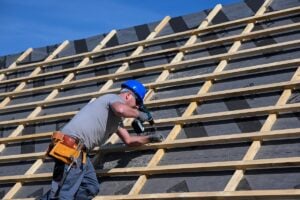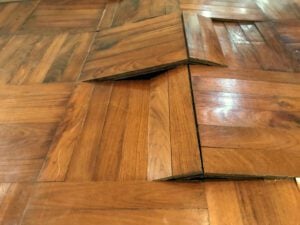When it comes to roofing options, the designs of hip roofs and gable roofs are among the most sought-after choices for homeowners and builders alike. Each roof style has its own distinct features, advantages, and considerations, making the choice between the two a critical decision for any construction or renovation project.
This blog post will guide you through all you need to know:
- Hip roof vs gable roof: what are they?
- The key differences between these two roofing styles
- How to decide which roof style fits your needs
⚖️ Comparing Hip Roofs and Gable Roofs

When deciding on a roofing style, two of the most popular options are hip roofs and gable roofs. Each comes with its own design, functionality, and benefits, making them suitable for different architectural styles and climates. Here’s a closer look at these two roofing styles to help you choose the best fit for your home.
What Is a Hip Roof?
A hip roof is a design where all sides slope downward toward the walls at a consistent angle, creating a sleek, geometric appearance. Unlike other roof types, it has no vertical edges or flat surfaces, offering a streamlined and modern look.
Key Features of a Hip Roof:
- Four Sloping Sides: Each side of the roof slopes downward and converges at the peak, creating a symmetrical structure.
- Durability and Stability: The design is highly durable and evenly distributes weight, making it ideal for harsh weather conditions like heavy winds or snow.
- Compact Eaves: The shorter eaves of a hip roof help protect the walls and foundation from water runoff, providing better moisture management.
What Is a Gable Roof?
A gable roof, on the other hand, is one of the simplest and most recognizable roofing styles. It features two sloping sides that meet at a ridge, creating triangular ends known as gables. This iconic design is often associated with traditional homes and is easy to construct.
Key Features of a Gable Roof:
- Two Sloping Sides: The two sides slope at an angle and form a triangle at each end of the roof, giving it a classic “A-frame” appearance.
- Open Design: While cost-effective, the open triangular ends can make the roof more susceptible to wind damage, particularly in areas with strong gusts.
- Ventilation-Friendly: Gable roofs allow for excellent attic ventilation due to their simpler framework, which is great for maintaining airflow and reducing heat buildup.
⭐️ 5 Key Differences Between Hip Roofs and Gable Roofs

Understanding the differences between hip roofs and gable roofs is essential when choosing the right structure for your home. The design impacts not only the home’s aesthetics but also its durability and ability to withstand different weather conditions.
1. Structure and Design
A hip roof is characterized by its four sides that slope downward, forming a sleek and symmetrical structure. This design provides a modern, geometric aesthetic that blends well with various architectural styles. On the other hand, a gable roof features two sloping sides and two vertical gabled ends, creating the classic triangular shape. This simpler and more traditional design is often seen in older or more conventional homes, making it a timeless choice for homeowners.
2. Weather Resistance
When it comes to durability, a hip roof stands out for its excellent weather resistance. The uniform slopes on all sides make it more stable and less vulnerable to wind damage, as there are no vertical surfaces for wind to push against. Additionally, the sloping design is ideal for regions that experience heavy snowfall since the snow can slide off easily, reducing the risk of structural strain. In contrast, a gable roof is less resistant to strong winds because of its large, flat gable ends, which can act as a sail during storms. While it performs well in areas with mild weather, it may not be the best option in regions prone to high winds or heavy snow.
3. Interior Space
The interior space offered by these roof designs varies significantly. A hip roof, due to its slopes on all four sides, limits the amount of attic or ceiling space available. The design doesn’t allow for much vertical room, which can make storage or ventilation more challenging. In comparison, a gable roof provides more usable interior space, thanks to its triangular shape. The open design of a gable roof creates a larger attic area, and the higher ceiling allows for easier installation of ventilation systems, making it a practical option for homeowners looking to maximize interior functionality.
4. Cost
The cost of constructing a roof is an important factor to consider, and hip roofs and gable roofs differ significantly in this regard. A hip roof is generally more expensive to build due to its intricate design and the additional materials required. The complexity of the structure demands more time and effort from builders, which can increase labor costs. In contrast, a gable roof is a more budget-friendly option. Its straightforward construction process and simple design make it quicker and cheaper to build, making it a popular choice for homeowners looking to save on construction expenses.
5. Versatility in Home Styles
When it comes to versatility, both roof types cater to different architectural preferences. Hip roofs are commonly found in modern, Mediterranean, or colonial-style homes, where their sleek and cohesive design enhances the overall aesthetic. Their symmetrical slopes complement these styles, adding an elegant and polished look to the house. Gable roofs, on the other hand, are highly versatile and suit a wide range of home styles, including traditional, classic, and even contemporary designs. Their iconic triangular shape has a universal appeal, making them a go-to choice for homeowners who want a timeless yet adaptable roof design.
👉 Choosing the Right Roof for Your Needs

When it comes to deciding between a hip roof and a gable roof, there’s no one-size-fits-all solution. The right choice depends on your specific needs, location, and personal preferences.
Weather Conditions
When selecting a roof, it’s essential to take the weather conditions of your region into account. The climate you live in can have a significant impact on the performance and longevity of your roof, so choosing the right design is crucial. For those in areas prone to severe weather, such as storms, high winds, or hurricanes, a hip roof is an ideal choice. Its sloped design not only enhances stability but also provides better resistance to strong winds, minimizing the risk of damage during extreme weather events. On the other hand, if you reside in a region with moderate climates and more predictable weather, a gable roof can be an excellent solution. Its simple and functional design efficiently sheds rainwater and snow, ensuring your roof remains practical and effective without the need for additional structural complexity. By aligning your roof choice with the specific weather conditions in your area, you can ensure better protection and durability for your home.
Budget
Your budget is one of the most influential factors when deciding on the right roof for your home. If you are working within a tight budget and looking for a cost-effective solution, a gable roof is a smart option to consider. Its straightforward design is relatively simple to construct, requiring less labor and fewer materials, which translates to lower overall costs. This makes it an affordable choice for homeowners who want to save money without compromising on reliability and functionality. However, if you are willing to invest more upfront for long-term benefits, a hip roof might be the better choice. While its initial cost may be higher due to its more complex design and construction requirements, a hip roof offers excellent durability and enhanced resistance to harsh weather conditions. Additionally, its aesthetic appeal and elegant structure can boost your home’s overall value, making it a worthwhile investment for those who prioritize longevity, resilience, and design. Whether saving money or investing in long-term benefits, your budget will play a key role in determining the most suitable roofing option for your needs.
Architectural Style
The style of your roof should not only serve a functional purpose but also complement your home’s architectural design to create a cohesive and visually appealing look. For homes with traditional or classic designs, a gable roof is a timeless choice that seamlessly blends with these styles. Its clean, straightforward lines enhance the charm of the property and create a harmonious balance with traditional architectural features. The simplicity of a gable roof ensures that it adds to the overall aesthetic without overwhelming the design. Meanwhile, for modern or Mediterranean-inspired homes, a hip roof is the perfect match. Its sleek and sophisticated appearance enhances the contemporary elegance of these architectural styles, providing a polished and refined finish to the overall structure. The smooth, angled slopes of a hip roof align beautifully with modern design elements, while also offering a touch of Mediterranean charm. By selecting a roof style that complements the architecture of your home, you can elevate its visual appeal and achieve a unified, polished design.
🏠 Hip vs Gable
Choosing between a hip roof and a gable roof ultimately comes down to your specific needs, preferences, and budget. No matter what style you decide on, having the right team by your side makes all the difference. At AllPhase Restoration, we combine years of expertise, top-quality materials, and exceptional customer service to deliver roofing solutions that stand the test of time.
Whether you need an inspection, repair, or full roof replacement, our certified and licensed team is here to guide you every step of the way. Ready to get started? Contact us today for a free, no-obligation inspection and let us help you create a roof you can rely on for years to come!




